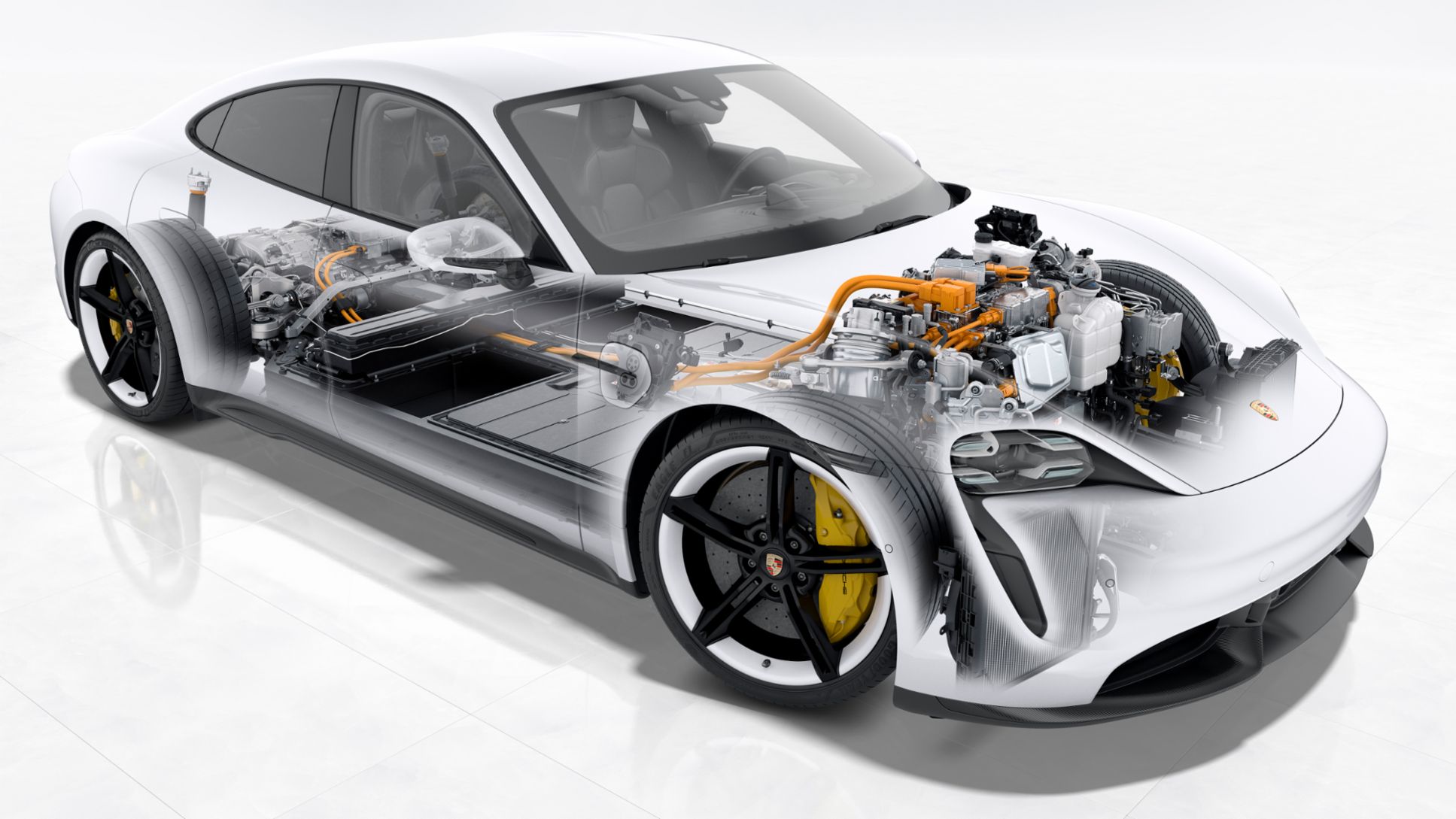All the components have been designed and optimised with lightweight construction in mind. The high-voltage battery with its internal load paths is cleverly integrated into the bodyshell structure.
The battery modules are built into the battery frame in such a way that maximum passive and high-voltage safety is achieved in the event of a crash. The structurally-integrated battery housing consists of different levels. At the centre of this design is the battery frame, which consists of a seal-welded, lightweight aluminium structure. As a result, optimum weight is achieved. A truss structure inside the particularly rigid all-round frame and crash box elements provides additional protection in the event of an impact. A steel plate protects the battery and the cooling structure against damage from below.
The crash sensors of the Taycan were developed to meet the specific requirements of electric vehicles. Additional sensors are therefore used to reliably disconnect high-voltage equipment in the event of a crash. Also in the event of an accident where the airbag is deployed, the battery connection to the vehicle is disconnected as a precaution so that no voltage is live. In the event of an accident, several high-voltage disconnection points in the vehicle enable the emergency services to intervene quickly and safely. All the fuses and busbars are located centrally in the vehicle. The battery management system, including the disconnection unit, is also located in a protected area in the centre console.
Crash load paths: new approaches for a new era
The newly developed front end design makes it possible to engineer the load paths in such a way that the crash requirements are met and space is gained for an additional large luggage compartment in the front end. Pedestrians are protected by an active bonnet.
In a side crash, the high forces generated are dissipated via both the bodyshell and the structurally integrated high-voltage battery. This concept enables the Taycan to achieve maximum passive safety and occupant protection coupled with minimum weight.
All the structural load paths relevant in a rear-end crash are made of aluminium to optimise weight. For the rear structure, casting technology is used at several structure nodes. Less material was required due to the optimised geometrical design and functions could be integrated at the same time.
Safety equipment: eight airbags as standard
Alongside the crash-optimised body, extensive passive safety systems ensure maximum protection. Depending on the seating configuration, four or five three-point belts with force limiters are fitted as standard. The Porsche Side Impact Protection System consists of side impact protection elements in the doors, and thorax airbags that are integrated in the side bolsters of the front seats. The side protection system is rounded off by curtain airbags covering the entire roof frame and side windows from the A to the C pillar. Classic full-size airbags and one knee airbag each for driver and front passenger are available at the front.
In total, the new Porsche Taycan features eight airbags as standard. Side airbags are offered as optional equipment. ISOFIX brackets on the outer rear seats ensure that appropriate child seats are securely anchored.
Additional content
Sports cars, redesigned with sustainability in mind. The first all-electric sports car, the Taycan, marks the beginning of a new era for Porsche as the company systematically expands its product range in the field of e-mobility. An overview.


